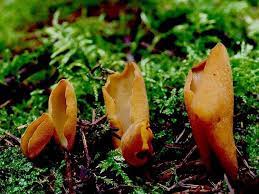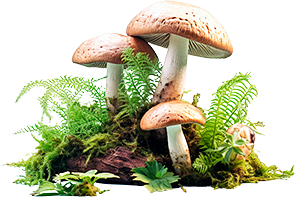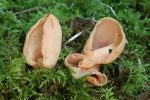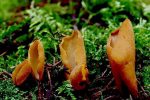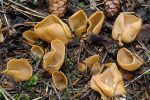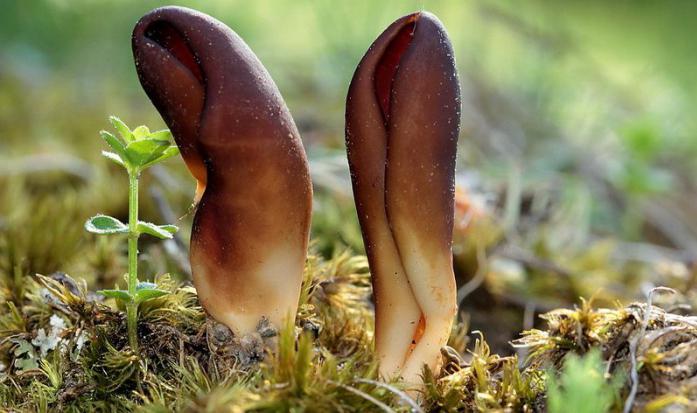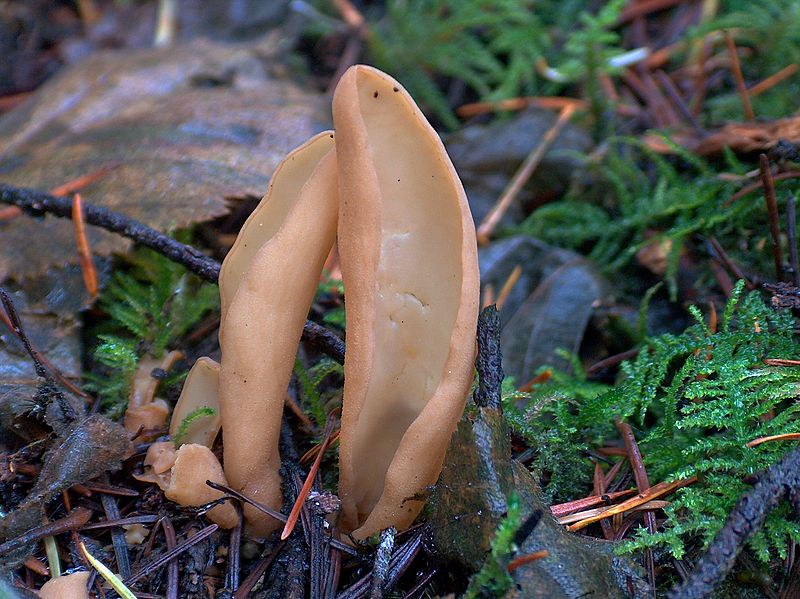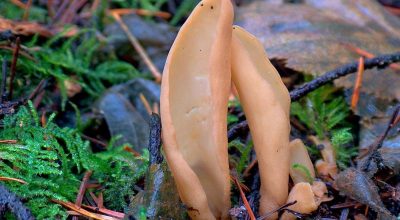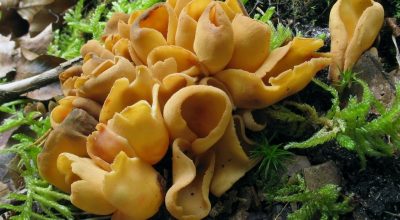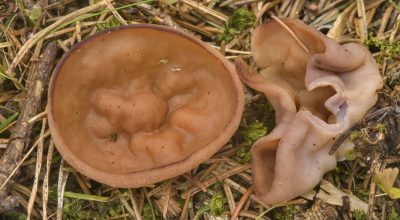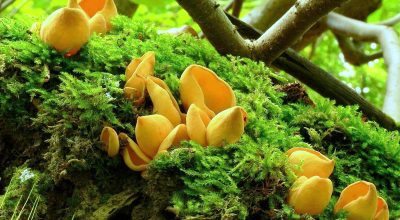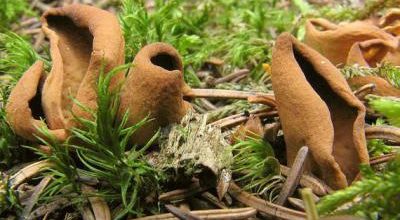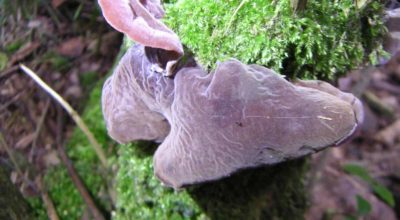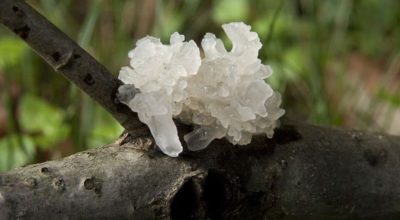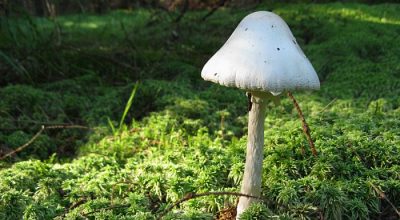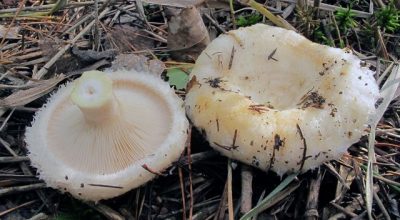Among the inhabitants of villages and cities, surrounded by forests, There is no shortage of people, who love quiet hunting.
Many of them over time became real professionals in this matter, predicting the whereabouts of their prey, No matter how hidden it is. However, few people heard about the mushroom of the hare ears: people tend to remember the appearance of that, What they are looking for, and ignore the uninteresting and unnecessary.
Content
Description
Fruit body
The fruit body of this mushroom reaches 1-5 cm in height, rarely 10 cm, and 1-3 cm in a circle. As follows from the name, The fruit body in shape resembles the ears of the hare with bent edges. The fruit body is sitting, one -sided and juicy. He has a narrow base, And the lower part resembles an elongated stem with short hairs.
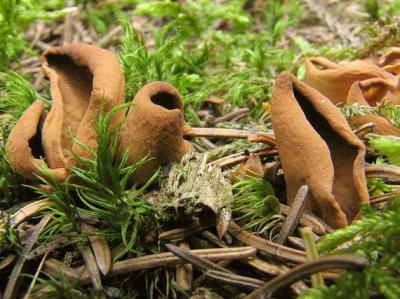
Inside the fruit body is ocher-orange, rust-brown or pale brown with red or rusty spots. The inner surface is smooth. The outer side of the mushroom has a lighter color, Hoast, Yellow-brown or ocher brown. The outer surface is rough, Without shine, With small hairs.
The pulp of the hare ear is thin and pale. Her color is the same, Like surfaces.
Leg
Spore -bearing layer
Himenopher is located on the inner surface of the "ear" (The outer part is sterile).
Spore-bearing layer ocher or dark orange with a pinkish tint.
Ecology and habitat
The mushroom of the hare ear is found in coniferous forests of the Far East and Siberia, in the Caucasus and in the middle strip of Russia. Mixed forests are also suitable for the family.
He does not form large groups, Therefore, the focused collection is quite complicated. However, the demand for it from the mushroom collectors is absent. Rabbit ear conditionally, He has no taste and smell, And there is very little pulp, not even one tooth.
These mushrooms are parasites. They settle on earth, in fallen leaves and often in heather or moss. Belief ears grow in coniferous forests and forests, mixed with spruce and pine.
Seven species of the genus Otidea are found on the territory of the former Soviet Union.
Doubles
| The hare of the ear is similar to his close relatives - Otidey Oslina Or a donkey ear. However, the donkey ears are larger and have a brighter color. Mushrooms are yellowish-orange or ocher-orange inside and hoarse. There is also a similarity with an amazing otide, but she is much darker in color. This mushroom has a dark brown color inside and light brown from the outside. |  |
| Another similar close relative is Otida is elegant, which has a more open small lemon yellow fruit body. Spiral or shell Otidea differs from the hare ear, that has a twisted fruit body, which is inside the red or chestnut color, And outside gray-brown with powder coating. Mushrooms have a characteristic smell. |  |
Video
Assessment of edibility
This is a little -known mushroom. It is considered conditional and present. The mushroom of the hare ear has a low rating of food quality, level 4. These mushrooms can be fried after boiling during 10 minutes. Like other otidei, hare ears are not very tasty.
How they are
Those rare mushroom pickers, who know about Otidia, Guaranteed, that they ate raw hare ears. They say, that the mushrooms are tasteless, But quite satisfying.
other side, Some people think, What, Like any conditionally present subspecies, the ears should first boil. Another cause of processing is the mushroom mitigation, which in raw form has a rubber -like consistency. Besides, In the process of preparation, they can be aromatized by spices.
Ulcerative: it cannot be salin for the winter, in dry form, it becomes flake -shaped and crumbly, and there is it fresh - little pleasure.
